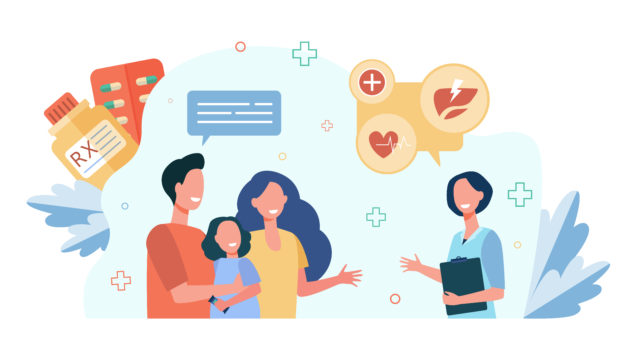
The ‘diagnostic odyssey’ is a term used to describe the often longwinded and unpredictable journey in time between recognition of disease symptoms and diagnosis. Understandably, living with long-term uncertainty and ensuring attendance of healthcare appointments, in conjunction with an already arduous daily life, can have a significant impact on an individual’s mental well-being. The Genetic Alliance constitutes a good diagnosis as one that is accurate, timely, informed, supported, collaborative, coordinated, respected, and acknowledged. Here, I compare the diagnostic journeys of two mothers (Diana and Erin) of daughters affected by a rare disease (RD), with a focus on the Genetic Alliance’s good diagnosis requirements, and the effects of these experiences on mental health.
The overarching journey
The average wait time for an accurate RD diagnosis is four years, yet many patients experience much longer torment, such as Diana, who endured a 41 year wait for her daughter Jane’s official diagnosis. Her journey was neither timely nor accurate, as this period was interspersed with various misdiagnoses. Diana had “no idea what was happening”; her daughter’s progress did not parallel that of her friends, supposedly suffering with the same disease. Increasing the depth and breadth of research into RDs should therefore aim to prevent these common misdiagnoses, and to accelerate and improve the accuracy of diagnoses.
On the other end of the spectrum fall much shorter diagnosis journeys, like that of Maria, daughter of Erin. Although 18 months is a comparatively brief timeframe, Erin stated this was “probably the worst moment of my whole life”, having been re-diagnosed with post-natal depression. Feeling already incredibly anxious with Maria’s struggle to reach milestones, Erin shared her need to advocate for Maria, which required her to “put on armour and battle”. This is a frequent occurrence amongst RD patients and their parents, emphasising the need for professionals’ attitudes pre-diagnosis to respect and acknowledge these hardships.
Delivery of diagnoses
Regrettably, come Maria’s diagnosis, Erin was poorly supported and ill-informed. Provided with a PDF, which was densely academic and horrifying in its content, Erin was informed over the phone of what she came to read – that her daughter had a life expectancy of 42 months. Unlike many resources written for RD patients and families, this academic paper was unsuitable. Hence, Erin was left with questions, that the underprepared paediatrician was incapable of answering. She, and the Genetic Alliance, stress the importance that these appointments should be delivered in-person, by somebody who understands the information.
Diana spoke highly of the delivery of Jane’s diagnosis, where she attended an appointment with a paediatrician who explained things clearly at a level she could comprehend. Unlike Erin, Diana felt many of her questions were answered in this appointment and was offered time to talk again in the future. Whilst inevitably overwhelmed by the lack of treatment options available, Diana felt empowered by the informative discussion and able to tackle what was to come, demonstrating the powerful impression enacted by diagnosis delivery.
Support groups and communication
The lack of collaboration between healthcare professionals had a large impact on the journeys of both mothers, evidencing the demand for implementation of coordinated care plans. Whilst Erin was delayed access to a specialist, Diana independently discovered links between Jane’s symptoms and recurring hospital visits, emphasising the importance of both supporting and respecting the valuable insight many patients and families have into their own RDs.
Following Jane’s diagnosis, Diana was able to reach out and connect with relevant support groups, which Jane’s doctor also took the time to join – highlighting a simple step professionals can take to support their RD patients. Diana shared how these groups helped her finally achieve a sense of belonging: “They definitely help you to feel you’re not alone”. Although Erin found the information provided by support groups helpful, she did not wish to partake further, deeming the content shared “incredibly distressing”. Consequently, it is vital to acknowledge the individuality in the journeys of RD patients, and the differing requirements and desires patients have for support.
Hope for the future
RD patients and families are keen to involve themselves in research, to better inform the field and provide hope for the ~263-446 million affected worldwide. “More information” pleaded Erin, representing one of the most prevalent needs amongst RD parents. Erin was plummeted into chaos with her panic-stricken family upon receiving genetic results, with little warning of the possible repercussions upfront. This highlights the ongoing need for support throughout the diagnostic process, perhaps aided by genetic counselling prior to these tests. Diana was right when she declared “you have no idea the lengths we went to, to get a diagnosis”, and neither do many healthcare professionals. I sincerely hope that by drawing attention to the current struggles RD patients face during their diagnostic odyssey, that implementations can be made, to bring them hope.
Comments